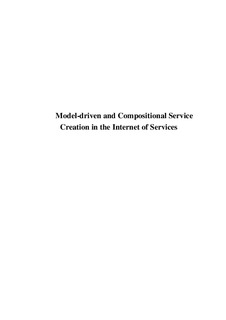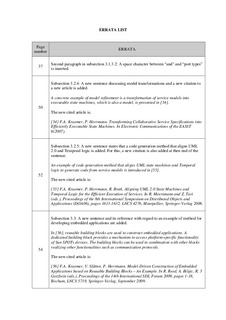| dc.description.abstract | In the Future Internet, billions of devices will be connected to the Internet. Devices
at any levels of hierarchy provide software functionality that can be used by
others. We can call the device’s functionality a service, which in turn, introduces
the concept of the Internet of Services. From the software developer perspectives,
a new service can be created by utilizing services in the Internet of Services. An
important issue of the creation of such service-based application is regarding their
deployment method on personalized and embedded devices. For each device with
different capability and configuration, different tailored code is required. For this,
a flexible method and tools that support an automatic code generation for a device
with a specific capability and configuration are mandatory.
This thesis proposes PMG-pro (Present, Model, Generate and provide), a language-
independent, bottom-up and model-driven method for the service creation in
the Internet of Services. With this method, a service is created by providing the new
functionality of a service-based application as a service. By using existing service
frameworks and APIs, from a service description, PMG-pro generates an abstract
graphical service representation (service model) and source code implementing for
service invocations. Depending on the target modeling languages, different graphical
notations can be used to represent services. Similarly, different programming
languages can also be used to implement the service invocations. We call these
pairs (i.e., the service model and the source code) platform-specific models. With
these platform models, service composers use the graphical service representation
to model new service-based applications, while the machine (i.e., computer system)
uses the source code to generate code from the service-based application model.
This thesis contributes to the service engineering method that applies a modeldriven
development approach. Three main contributions are a model-driven method
for service creation, an automatic service presentation of pre-made services, and a
new method of handling device capability and configuration. With these, service
creation in the Internet of Services can be done in a rapid and automatic manner.
Service designers can create a new service by defining a model of service-based
applications using pre-made service models, while code for a specific device can be
generated automatically from the model.
The PMG-pro method has been partly prototyped and validated on various case
studies in the domain of smart homes that have produced encouraging results. The
method promotes a rapid, language-independent, and unified process of software
service development. | no_NO |

